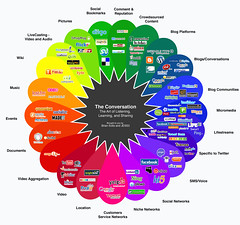Due: April 28 by 11:59pm in GeorgiaVIEW
Worth: 200 points
For the final project in PRCA 3030, students have the option of creating their own Social Media Resume or writing a Social Media Policy for a client organization. This blog post describes the Social Media Policy assignment.
The Process
Using the Policy Tool for Social Media, a free service of PolicyTool.net, create a Social Media Policy for your client. (Choose your own client.) In order to do this, you will make and justify several decisions, including the following questions (taken directly from Policy Tool for Social Media):
- Who can use social media in your company?
- Must employees obtain permission from someone to use social media?
- May employee login ID’s or user names include the [“Organization Name”] without approval?
- Are there certain well known employees who must follow these rules even for personal social media?
- Are there any ethical standards that your employees must normally follow for publishing or commentary?
- Do you offer internal assistance in setting up social media accounts and settings?
- Must the user’s social media profiles be consistent with [“Organization Name”] website or publications?
- Must official corporate photos be used for profile photos?
- Should the employee include a disclaimer stating that they are not speaking on behalf of the company?
- Do you want to add tips for successful use of social media that are helpful, but not strictly speaking required for a policy?
At each stage of the creation process in the Policy Tool for Social Media, you are asked to make a decision about the above questions. For each decision you make, provide a paragraph or so description of how you made the decision. You will want to get input from your client, rather than making these decisions in a vacuum. Put these questions and how you arrived at each decision in the Appendix of your paper.
The Paper
Your Social Media Policy Paper will consist of the following:
- A short description of your client
- A description of your client’s current involvement in social media (including how leaders & employees in the organization are using social media). See the Social Web Strategy Worksheet (from Chapter 1) on the Resource CD that came with A Survival Guide to Social Media and Web 2.0 Optimization: Strategies, Tactics, and Tools for Succeeding in the Social Web for suggestions of types of social media sites the organization may be involved in.
- A few paragraphs on the need for a social media policy (for any client, not just this one). Include information on the dangers of NOT having a policy in place.
- The policy that you create using Policy Tool for Social Media (copy and paste)
- A recommendation for how to implement the policy in the client organization
- An appendix, which lists your justification for each of the answers to the policy questions, along with contact information for your client, just in case I have any questions
Remember
If you use information in your paper that you did not write yourself (for example, the client description), it’s critical for you to cite your sources. For the policy portion of your paper, you can simply indicate that you used the Policy Tool for Social Media to create the policy. As is common in our field of study, use APA Style for citations.



